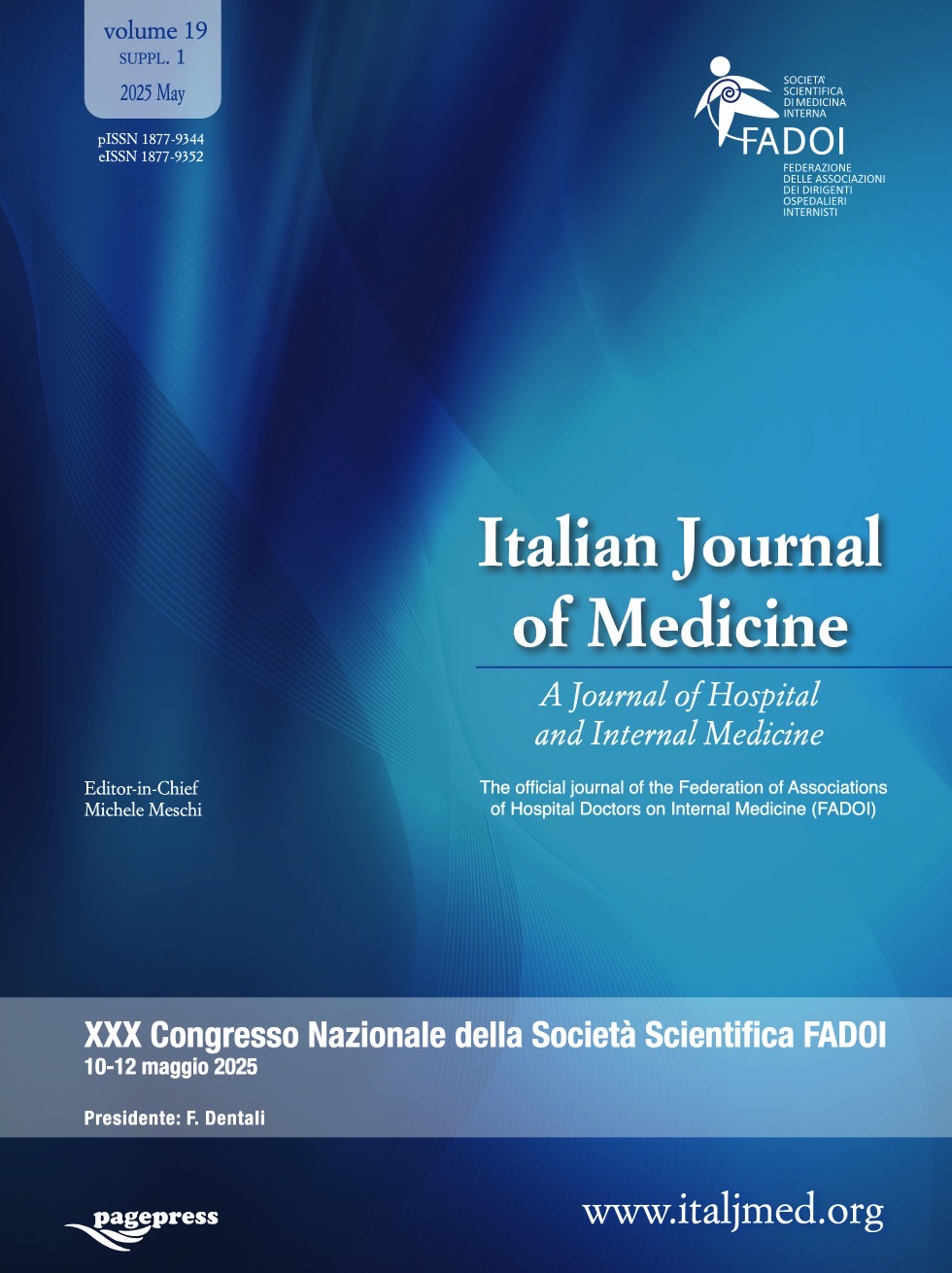XXX FADOI Italian Congress | 10-12 May 2025
Vol. 19 No. 1(s1) (2025): XXX FADOI Italian Congress | 10-12 May 2025
P21 | A case of acute hepatitis: does therapy lead to a diagnosis?
F. Borza1, M. Delle Monache2, M. Fabietti2, V. Mura2, M. Pellegrinotti2, A. Luzi2, A. Cappelli2 | 1Dipartimento di Medicina Traslazionale e di Precisione, Università La Sapienza, Roma, 2UOC Medicina Acuti, Ospedale Sant’Eugenio ASL RM 2, Roma, Italy
Publisher's note
All claims expressed in this article are solely those of the authors and do not necessarily represent those of their affiliated organizations, or those of the publisher, the editors and the reviewers. Any product that may be evaluated in this article or claim that may be made by its manufacturer is not guaranteed or endorsed by the publisher.
All claims expressed in this article are solely those of the authors and do not necessarily represent those of their affiliated organizations, or those of the publisher, the editors and the reviewers. Any product that may be evaluated in this article or claim that may be made by its manufacturer is not guaranteed or endorsed by the publisher.
Published: 25 August 2025
57
Views
0
Downloads







